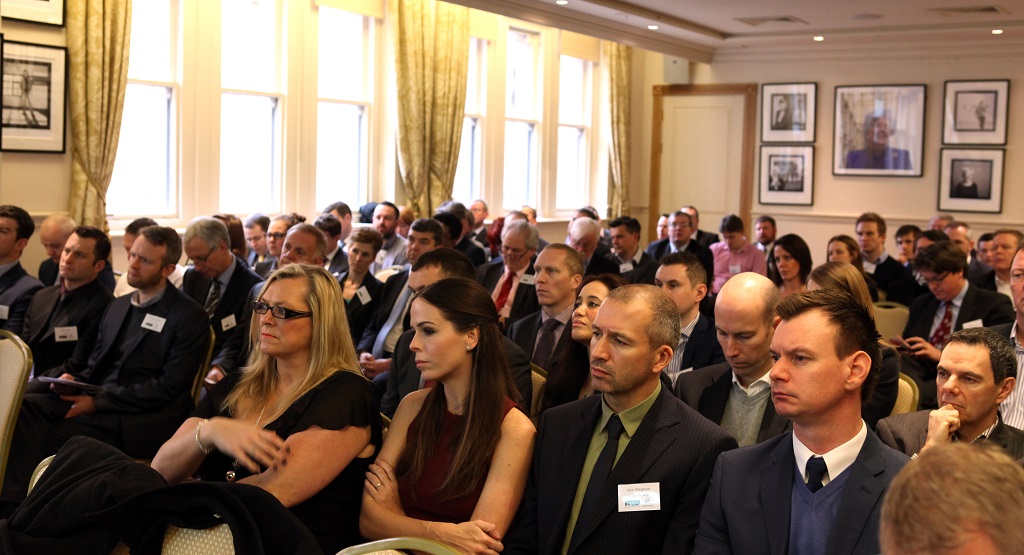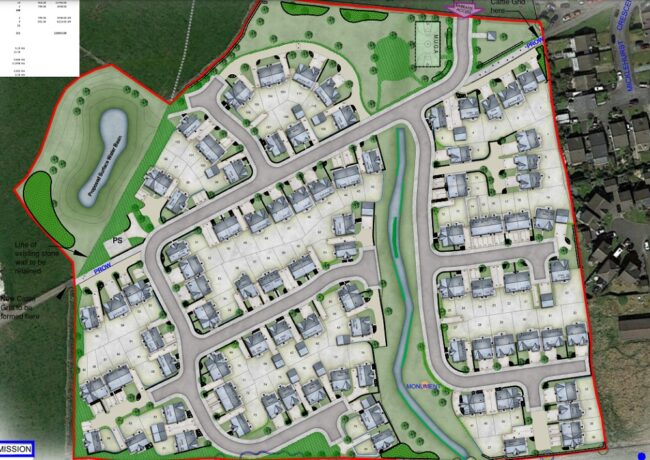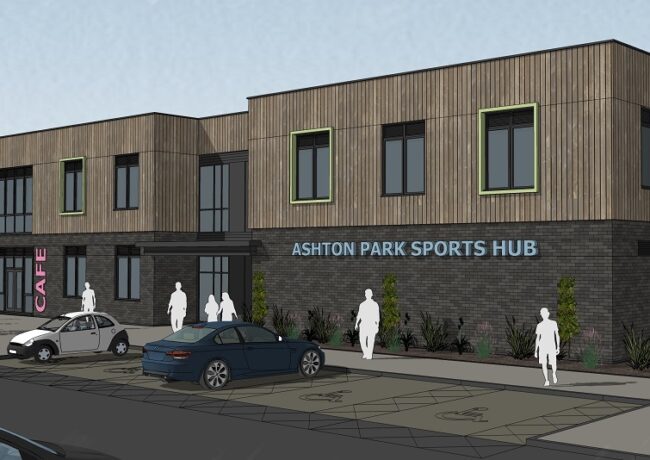Event Summary
Logistics Lunch: Summary + Pictures
A packed room of senior representatives from across the industrial sector attended the Place North West Logistics Lunch, with conversation focused on the rise of e-commerce, transport trends, planning policy and banks' willingness to lend. [GALLERY]
On the panel was Lee Charnley, director of investor and developer Property Alliance Group; Steve Burne, managing director of AEW Architects; Andrew Bickerdike, associate director at planning consultancy Turley; Daniel Burn, director of JLL; and Derek Bald, divisional head of real estate finance at Santander.
The debate at Albert Square Chop House in Manchester was sponsored by AEW Architects and Property Alliance Group.
See below for image gallery
Burn began with an overview of recent activity in the sector. North West industrial take-up rose to around 12.5m sq ft in 2014. The lack of supply and hesitant development pipeline remain key issues throughout the market into 2015. There were only two large design-and-build transactions signed in 2014; The Hut Group and a manufacturer at Omega in Warrington. Burn highlighted the lack of spades in the ground across the region despite many schemes being under discussion.
Recent industrial deals by Property Alliance Group include 60,000 sq ft to Elliot Baxter in Trafford Park, 90,000 sq ft to Amazon in Warrington, and 80,000 sq ft to a third-party logistics company in Wigan.
According to Property Alliance Group's Charnley, design-and-build still required a leap of faith, both for the occupier and the landlord. He said: "Tenants want quality, well-located space, and most importantly they want it quickly."
Questions from the floor included how local authorities could better allocate land for industrial sites, how interested tenants are in sustainable design, and the potential for oversupply if all the proposed developments emerge at once.
E-commerce
According to AEW managing director Burne, the increasingly dominant e-commerce sector was affecting the fabric of the logistics industry on a number of levels.
"E-commerce is driving current design trends. Long-term storage considerations have turned into just-in-time limitations. Internal storage designs are changing because of that, as are the proportions of the shed, which are moving from a length to width ratio of 2:1 in the past to 3:1 in today's thinner designs, with docking access only needed on one side rather than two.
"The growth in online purchasing is also impacting on the locations of warehouses, with an increase in click-and-collect buildings based close to population centres rather than motorway junctions."
AEW is currently working with Peel Logistics on units of between 175,000 sq ft to 700,000 sq ft, Legal & General and DB Symmetry at the 35-acre M6EPIC site in Lancashire and BAE Systems on the Samlesbury Aerodrome site.
JLL's Burn said consumers increasingly expected next-day delivery and e-commerce would continue to be a fast-changing sector. "We're seeing massive warehouses full of stock for delivery centres closer to cities. With companies like Amazon trialling one-hour delivery in New York, delivery times are going to be squeezed even shorter."
Time to speculate
For Derek Bald of Santander, the lack of supply in the logistics market had not yet equated to speculative schemes being put to the bank. "As yet, there are not many speculative projects going ahead in the whole industry. We're mainly dealing with pre-lets for development finance, and looking at big boxes on the investment side, but it is still a difficult market for purely speculative projects."
Burn agreed that speculative development was yet to move beyond talk in many cases. "We drew up a list of speculative projects proposed in the North West around nine months ago, and the list would be similar today, with the same developers and the same funds," he said. "There are only two spec sheds currently under construction, in Knowsley and in Chorley. There is plenty of pipeline, but with the election coming there's a level of uncertainty which means that there is not likely to be the flood of spec seen eight years ago."
For Burne, some clients in the Midlands were being forward speculative projects, but the North West was yet to see talk turn into action. "If speculative schemes are going ahead it's in the 200,000 sq ft size bracket, which are more adaptable. Beyond that the sheds need to be bespoke to the occupier."
Bald was encouraging about the potential for funding as the bank gained confidence post-recession. "We are reviewing developments and appraisals, and funding costs. There is a willingness to look at more things, in the right place and right size, in the right market. We are softening terms on deals that a few years ago we wouldn't have looked at at all. Banks like industrial schemes, and the spread of tenants and risk." According to Bald, lending values are currently at around 55% to 65% of the development cost.
Planning for sheds
According to Turley's Andrew Bickerdike, national planning policy was not doing enough to support the potential of the logistics sector.
"The National Planning Policy Framework which was launched in 2012 talks about growth, but it's a wide interpretation and not consistent with the local authority approach," he said. "Local authorities by and large don't understand the economic contribution of this sector.
"The continuous protection of the green belt in particular is an issue. In 2010 to 2011, 60% of warehouses were on greenfield land, compared to 25% of houses. There are very few plots able to provide for buildings with large floorplates, and residential requirements on brownfield sites puts pressure on logistics to look for locations elsewhere."
Easy being green?
With sustainability increasingly high on the political agenda, the panel was asked how far these priorities had translated into the industrial and logistics sector.
AEW is currently working with Peel on rationalising and standardising its logistics buildings and determining what can be done to ensure they are saleable in the future.
"The end user is looking at life cycle costs," Burne said. "It is not worthwhile to just say that the building is energy efficient. If someone looking at the asset for future sale, then they are interested in sustainability. BREEAM is not a selling point any more, buyers are more concerned about energy performance certificates.
"If you are savvy about how to adapt a building then simple measures like photovoltaic panels can be all you need. But with a lot of older stuff, landlords are going to need to rebuild and start again."
According to Charnley, "occupiers want sustainability, but they're not prepared to pay for it. When looking at a location, price always wins."
With the general election just three months away, did the panel expect 2015 to be the year that logistics would get the attention it deserved on the national stage?
JLL's Burn was optimistic. "Logistics is in the media more than ever before, with Cameron visiting The Hut Group's site at Omega, and Osborne looking around the Airport. They're keen to be associated with our sector's success."
Click any image below to launch gallery
- Logistics Lunch panel
- Steve Burne, Lee Charnley and Andrew Bickerdike
- Daniel Burn of JLL
- Derek Bald, left, alongside Daniel Burn and Steve Burne
- Daniel Burn of JLL
- Lee Charnley of Property Alliance Group
- Steve Burne of AEW, left, alongside Lee Charnley of Aliiance
- Derek Bald, Santander
- Andrew Bickerdike of Turley




















